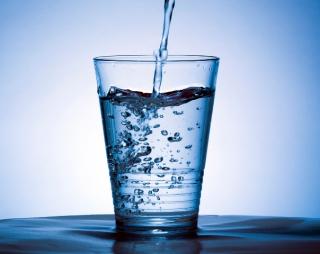NORTH SMITHFIELD – At just below 30 parts per trillion, one well that provides water to students at North Smithfield schools is well below the health advisory limit for contaminants known as PFAs set by the U.S. Environmental Protection Agency, and would be considered safe by those federal guidelines.
But under proposed legislation to regulate and establish safe standards for the chemicals in Rhode Island, the number would trigger a quarterly monitoring requirement. And in the neighboring Massachusetts, the water supply would be deemed unsafe, exceeding the state’s 20 parts per trillion limit, and would require treatment.
PFAs, or per- and polyfluoroalkyl substances, refer to a group of manmade chemicals found in everything from clothing and food packaging, to firefighting foam and household cleaning products. The EPA has said that the substances have negative impacts on human health, but only when found in drinking water at a level exceeding 70 parts per trillion.
Some public health advocates say the threshold is not stringent enough, leading to laws that currently vary from state to state. The chemicals have been shown to cause reproductive, developmental, liver, kidney, and immunological effects in laboratory animals, according to the EPA.
Rhode Island is one of 34 states across the country that has yet to pass any regulation of PFA substances, although bills that aim to create standards for the chemicals in drinking water have been sponsored every year since 2018.
Opponents of stringent regulation, meanwhile, note that “parts per trillion” denotes an extremely low unit of measurement, amounting to just drops in an Olympic-sized swimming pool.
“There is a debate as to the baseline levels that are considered acceptable,” said Supt. Michael St. Jean when the topic was brought before the North Smithfield School Committee last week.
In 2019, the Rhode Island Department of Heath tested all schools across the state that utilized well water and found 13 water systems that had PFAs greater than 20 parts per trillion.
In North Smithfield, all of the schools utilize well water, and data published by the RI DOH from the testing showed results of 24, 29 and 30 ppt.
The information recently prompted a group of residents to write a letter to the school board voicing concern.
“We urge you to protect the health of our children, families and community by taking comprehensive and urgent measures to identify and remediate PFAS chemicals in the drinking water of our schools,” stated the communication, signed by seven town residents. “Our request is that the school committee commission a working group or task force that would be comprised of at least one school committee member along with at least one parent of a North Smithfield school student.”
Aleksandra Norton, co-chair of the community group Engage North Smithfield, also spoke before the board at their meeting on Tuesday, May 18.
“We wanted to share with you how committed we are in helping the schools navigate this and solve this urgent matter,” said Norton.
In response, St. Jean noted that the schools’ wells are monitored by the RIDOH Water Quality division through Northeast Water Solutions, and tested regularly. He said current results show that PFAs were, “essentially not detected,” in one well serving the high school and middle school, and under 6 ppt at a well serving North Smithfield Elementary School. The highest, a second well supplying water to NSHS and NSMS found PFAs “under 30 ppt.”
“The PFAs tests conducted on our well water show rates far below the EPA’s 70 parts per trillion guideline,” St. Jean said.
Testing for various potential pollutants, he noted, is conducted on a monthly basis, and the district has not had any type of violation since 1994. Results from current and historic well tests are available at https://dwq.health.ri.gov.
“All of them came out clean. No red flags, no warnings. Just good water,” the superintendent said. “I’m perfectly confident in the water.”
Further, St. Jean noted that new water fountains at the schools have filtration systems built in.
In a discussion that mirrors much of the ongoing state and national debate, the group said they still feel the issue should be addressed proactively.
“As you know public health recommendations and guidelines change over time as studies emerge, and sometimes the state and federal policies lag behind the science,” the group noted in a response. “While the levels of PFAS that have been detected in our schools’ waters are well below the state threshold of 70 ppt, we remain concerned. There is evidence to suggest that the threshold should be significantly lower in order to protect our children.”
The concerns are in line with House bill 7216, which, if passed, would dictate that, “On or before August 1, 2021, if the PFAS contaminants exceed the level of twenty parts per trillion, the public water supply system shall provide potable water through other means to all customers or users of the system.”
“PFAS are potentially toxic to humans even in very small concentrations and pose a wide range of health threats,” notes the legislation, referred to House Environment and Natural Resources.
Various versions of similar legislation are pending before the General Assembly.
School Committee Chairman James Lombardi noted that five years ago, he fought for public discloser of the town’s well water test results.
“We have an unfortunately high level of kids with cancer in our town,” Lombardi said, noting the his wife, April Lombardi, raises money for families with children with cancer. “This is near and dear to me.”
The chairman, however, said his concerns have since been allayed.
“When I realized that the Department of Health requires us to report and we are well within the requirements, I was satisfied,” Lombardi said. “We have many issues and challenges ahead of us on all different levels and if the law changes, we will deal with it. I do not see this as an issue and appreciate your advocating for our children.”
St Jean noted that the district will continue to monitor the water quality at the schools.
“This is something that is very much on the radar of the School Department, as well as the state,” said St. Jean. “If anything came up as a flag in any of the tests, we would be immediately notified.”








